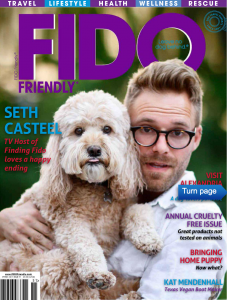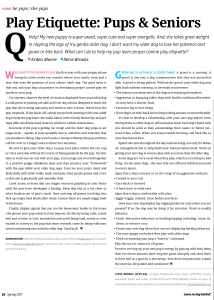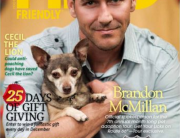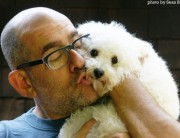Q: Help! My new puppy is super sweet, super cute and super energetic. And, she takes great delight in nipping the legs of my gentle older dog. I don’t want my older dog to lose her patience and growl or bite back What can I do to help my pup learn proper canine play etiquette?
Growling is actually a good thing! A growl is a warning. A growl is one way a dog communicates that they are uncomfortable. A growl is being patient. Without the growl, your older dog may fight back without warning, so be ready to intervene:
- The instant you sense one of the dogs not enjoying themselves
- Aggression or humping (older dogs with health conditions like arthritis may have a shorter fuse)
- Excessive leg or face biting
- If one dog is on their back for too long looking anxious or uncomfortable
It’s best to develop a relationship with your new pup before introducing them to other dogs in off-leash play fests! Each dog’s bond with you should be solid so they acknowledge their name, or better yet… come when called. When you sense trouble brewing, call back the canine that listens best.
Spend solo time throughout the day with each dog, not only for behavior management but to help build your human-canine bond. Work on getting your new dog to want to play with you more than the other dog.
Some dogs are very vocal when they play, which is not always a bad thing. It’s the silent dogs…the ones that are stiff and still that you need to worry about.
Signs that a dog is uneasy or on the verge of an aggressive outburst:
- Tucked or erect tail
- Ears back or forward
- A hard stare or wide eyes
Signs that a dog is comfortable with play:
- Jiggly-wiggly, relaxed, loose bodies and faces
Does your new dog display leg-nipping behavior only when you are present? If so, the dog may be doing it for attention. Work to modify behavior:
- Teach alternative behaviors to herding/nipping including: come, sit, down, or retrieve a toy
- Praise your new dog when they are not displaying herding behavior
- Tire your puppy out before they play with older dogs
- Work on teaching your pup a “leave it” command
Play this turn it on/turn it off game:
Practice revving up your new pup’s energy by playing wild with them, then two-three minutes later, stop the game abruptly and send them to their bed or a spot for a down/stay. Two-three minutes later, repeat the exercise. Be patient and consistent!








